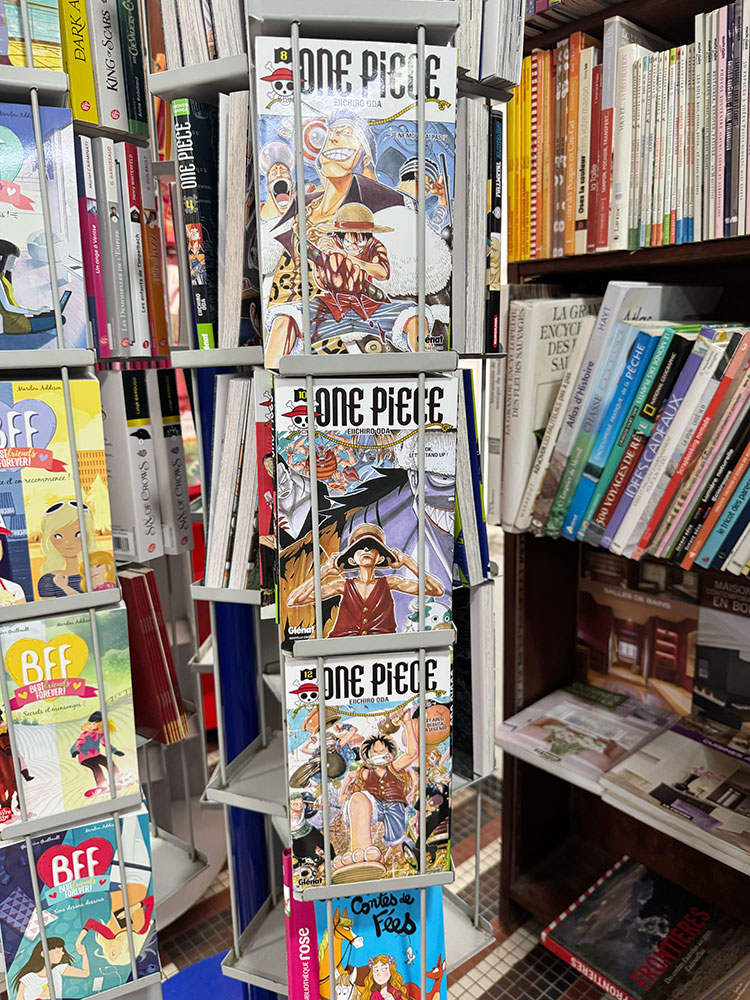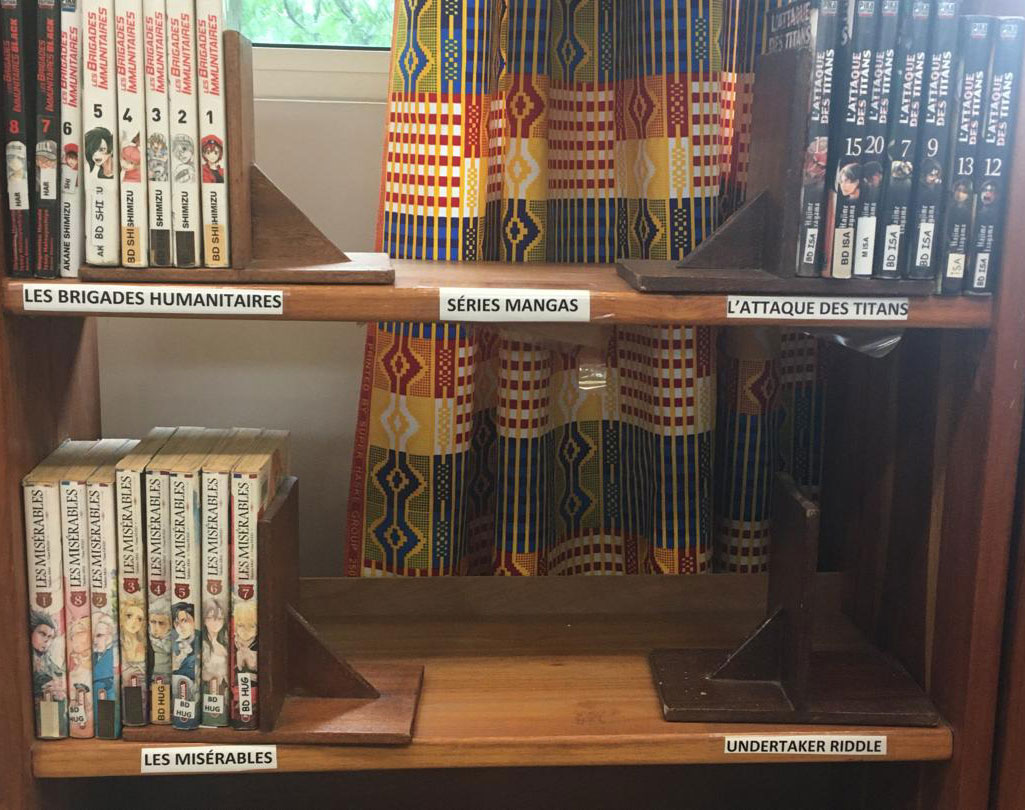How Have You Never Heard of "Lady Oscar"?: A Snapshot of Growing up an Otaku in Francophone Africa
My parents remember me sitting in front of the TV watching Dragon Ball, eagerly following Goku’s adventures with his friends. I remember watching every episode, and of its sequel series, Dragon Ball Z, and not once did I find it strange for me, a young girl born and raised in West Africa, living in Francophone Togo, to be so fascinated by a Japanese animated series transmitted to me in French. Of course, my interest in manga and anime soon turned into keeping my television tuned to Mangas (the official channel for anime on my cable service, Canal+) all day. I watched almost every show they had on catalogue, then begged my parents to help me look for drawn manga volumes at the local bookstore on weekends after school. I familiarized myself with every manga genre I could get my hands on – from shōjo to shōnen.
During and after the pandemic, anime consumption seems to have hit another all-time high in terms of global viewership, with shows like Hunter x Hunter, Demon Slayer, and most recently, Dan-Da-Dan gaining huge followings on social media and attracting those who had never watched anime before. These viewers were turned into otaku (devoted anime and manga fans) thanks to the communities they had found through these shows. To me, this has made being a self-identifying otaku so much easier, accepted, and safe, at least compared to 10-15 years ago, where I could remember being jeered at by my peers for having a hobby that was too “strange” to be accepted – my “obsession” being with Japanese media rather than popular French animated shows like Titeuf. Now, it feels like almost everyone consumes or at least has interacted with Asian popular culture like K-Dramas, anime, K-pop, or C-dramas. And yet, despite it being easier to find people to talk about anime and manga with, I have never felt more estranged in my experiences with them. At first, I thought that this might be because I attend graduate school in Canada, and most of the country is Anglophone, unlike where I grew up. But as I also spoke to my friends right across our border in the United States, the world's largest consumer of anime, I felt an unexplainable rift that went beyond the language barrier.
I usually felt this rift when talking with longtime fans, and we would discuss which anime/manga we thought were “classics” that everyone should watch. While I would recognize all the ones that they would recommend, I saw confusion on their faces as I told them mine such as Lady Oscar. I realized two things. First, there was a clear temporal gap in our favorites, as I would get recommended works from the early 2000s and 2010s, but my recommendations would be from the 90s and 80s. Second, consuming anime meant for the “French market” had left me with an altogether different experience than any of my peers that I would meet in North America. To be honest, due to me growing up in West Africa, even if I had met another French-speaking person in Canada, my experience as a Francophone African would still set me apart.
Surprisingly, not many are aware that France is one of the largest consumers of Japanese cultural products globally. While not at large as the US market, France’s anime consumption stands out among European countries, second only to the U.K, and is said to be the world's biggest manga importer as of 2023, with 55 percent of its local comic book distributions being of (translated) Japanese origin. There has been a long history of cultural exchange between France and Japan since at least the 19th century, but a surging interest in anime and manga in particular started in the late 1970s, with the arrival of Goldorak (known as Grendizer in Japan), an early mecha anime, on one of the country’s three public TV stations. With Goldorak’s success, other major channels also decided to start importing more series for children’s consumption, hooking young French minds onto Saint Seiya (translated into Les Chevaliers du Zodiaque) or even The Rose of Versailles (better known as Lady Oscar for French viewers). Today, Canal+, France’s largest premium television service, has several channels airing the latest episodes of your favorite anime, sometimes translated in French even before English – such as J-ONE, Game One, and my childhood favorite, Mangas.

Fig. 2: A shelf of available mangas at Librarie Star. (Photo by the author, 2024)
Togo gained its independence from France in 1960, and like other past French colonial territories, conducts most of its operations in French. Lome, the capital where I grew up, is home not only to lovely beaches, but also to pharmacies filled with French-imported medicines and bookstores containing titles freshly pressed from the biggest French print houses. Wouldn’t it be funny to think of children reading the newest One Piece manga in French as a form of neocolonialism? Joking aside, it is quite interesting to see how France's large manga market and anime demand has been able to trickle down into its former colonies. Those who are fortunate enough to afford good cable in Lome always turn to Canal+, the same way those who can afford to go into a good bookstore or go to a good school with a well-stocked library can buy or borrow the latest volume of Naruto. The African continent holds the largest number of Canal+ subscribers after France as of 2023, with more than 8 million watchers spread out over France’s ex-colonies. This has led many African children to acquire much of the same cultural capital/referents as any person in metropolitan France would, and thus being able to engage in many of the same fandoms that would be popular in France. The first photo of this essay depicts one of the bookstores in which you can currently find manga distributed in Lome – Librarie Bon Pasteur [Fig. 1].
The bookstore’s selection is a bit scattered, located amongst children's books, and not large enough to occupy an entire shelf on its own [Fig. 2]. However, this is not the case everywhere.

Fig. 3: Shelf of mangas at the Lycée Francais de Lomé’s library. (Photo by the author, 2024)
When I was younger, another bookstore, named Librarie Star, had a far larger collection that I would browse through every other weekend. Today, Librarie Star is closed, making Bon Pasteur possibly the only major bookstore in the city. With Librarie Star gone, Bon Pasteur has had to think of a way to keep up with the demand for the mangas people knew Star for. However, with new titles coming out every month, it is hard to know what people want just yet.
But for those who cannot buy a copy of their favorite manga every week, your next best bet would be your school library, which is where I would turn to more often growing up [Fig. 3].
Looking back at these well-worn tomes brings back memories of sitting in on weekly Manga Club gatherings with five other classmates. While that after-school club is no more, the same books we used to share and discuss still sit in the same room, ready to be opened by another young curious hand.
Abena Somiah is a PhD student studying Human Geography at McGill University in Montreal, Canada. She hails from Accra, Ghana, and has lived in Togo. She specializes in Africana Studies and Afro-Japanese Studies. Email: abena.somiah@mail.mcgill.ca